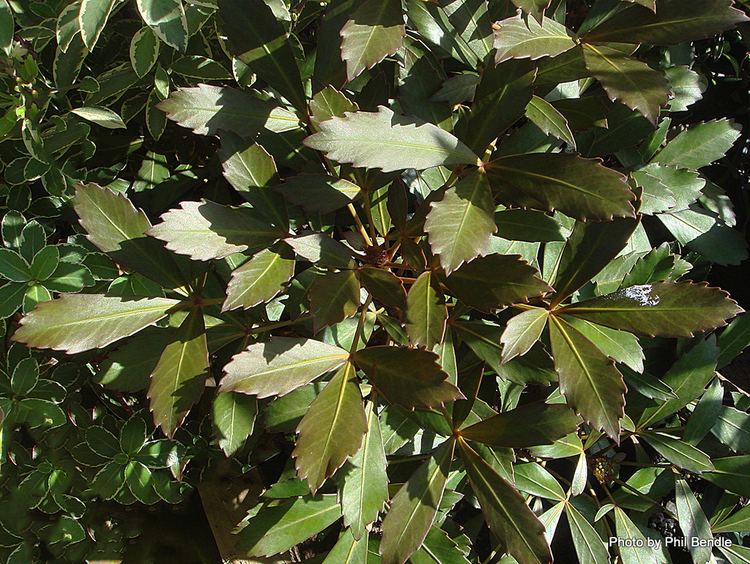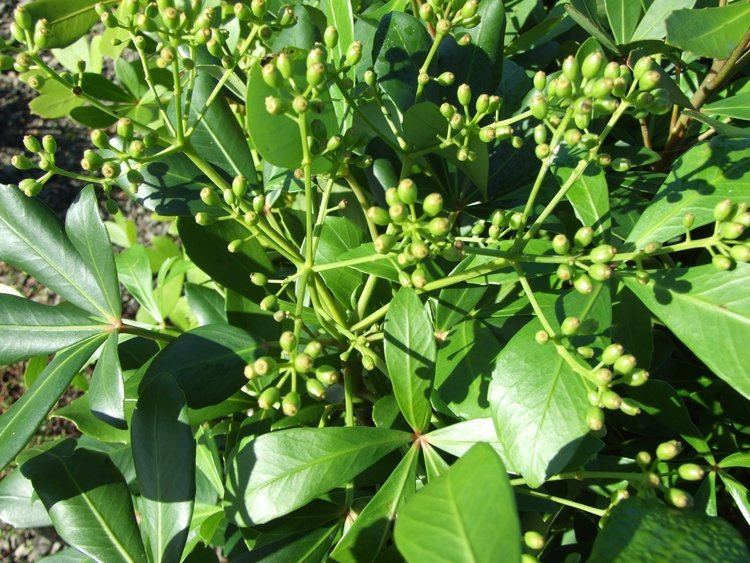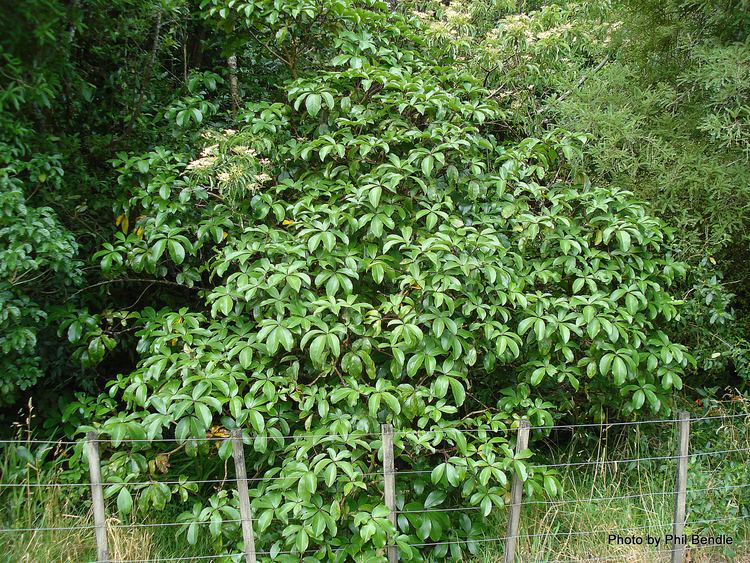Scientific name Pseudopanax Rank Genus | Higher classification Aralioideae | |
 | ||
Lower classifications Pseudopanax crassifolius, Pseudopanax lessonii, Pseudopanax arboreus | ||
Pseudopanax garden plants
Pseudopanax is a small genus of 12–20 species of evergreen plants, the majority of which are endemic to New Zealand, although they also occur in Tasmania (Australia) and some plants from South America have at times been included in this genus. Flowers of the genus occur in terminal umbels.
Contents

Natural occurrence

Pseudopanax occur in forest or scrub environments. The genus contains some remarkable small trees with distinctly different juvenile and adult forms, such as Pseudopanax crassifolius and Pseudopanax ferox (commonly referred to as 'lancewood' and 'toothed lancewood', respectively). Pseudopanax arboreus (common name "five-finger") is a very common small tree in New Zealand native forests. Pseudopanax simplex occurs on the North Island south of the Waihou River; in Westland and other South Island forests; as well as on Stewart Island.
Cultivation

Many of the species are popular in New Zealand gardens, but are rather rare in cultivation elsewhere, requiring mild, moist conditions similar to those in New Zealand, without extremes of temperature in winter and summer. They reportedly grow well in Southern California and warmer parts of Great Britain. A number of cultivars have been developed, mostly of Pseudopanax lessonii. These include 'Gold Splash', which has yellow variegated leaves, and 'Nigra' which has dark purple-brown foliage. A National Trust listed specimen of Pseudopanax crassifolius exists on the Alton property at Mount Macedon, Victoria, Australia, which is 21 metres high and has an 11.5 m spread. Its age is estimated at 100 years.

There are also two species endemic to southern Chile and Argentina: P. laetevirens a small tree, and P. valdiviensis, a woody vine from Valdivian temperate rain forests. However, both of these species are included by some authors in Raukaua.
Host plant

In New Zealand various species in this genus have been shown to be the host plant for the larvae of Scolopterus penicillatus, a common endemic weevil. The larvae develop in recently dead bark.
